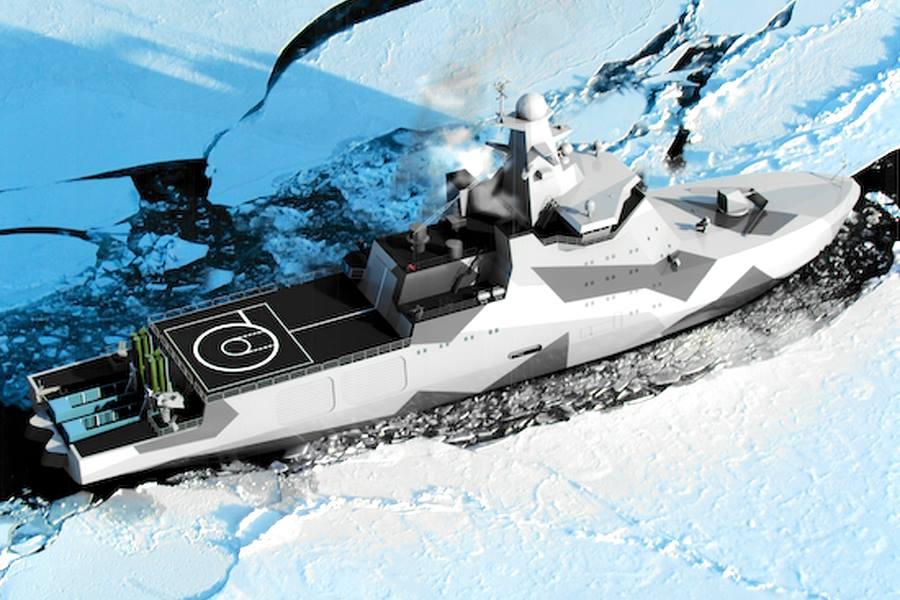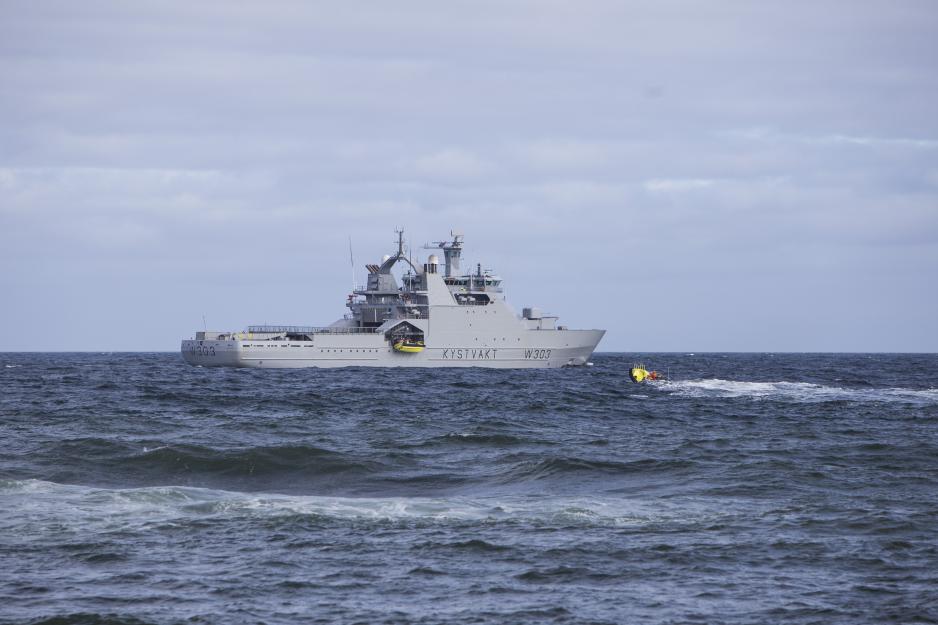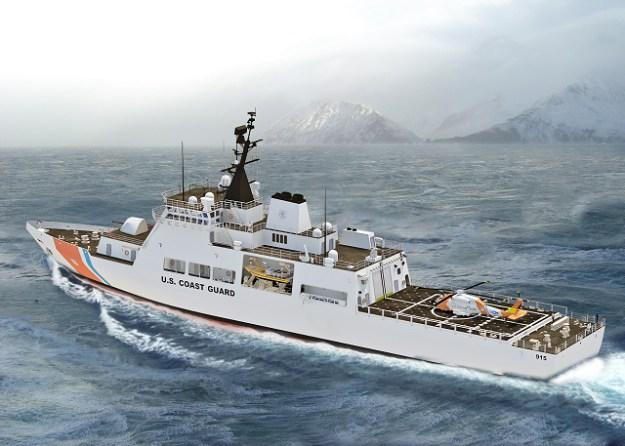Russia to build new class of Arctic offshore patrol ships

Project 23550 concept. (Source: Russian Ministry of Defense)
Construction is slated will begin later this year.
Construction is slated to begin later this year.
The Russian Ministry of Defense announced on May 4 that it has signed a contract to begin building a new class of multi-role Arctic patrol ships, dubbed "Project 23550". The Ministry of Defense ordered at least two of the polar-ready Project 23550s, which the Russian Navy expect to take delivery of by the end of 2020.
The first two ice-strengthened Project 23550s will be built at Admiralty Shipyard in Saint Petersburg and construction is expected to begin later in 2016. Once completed, the ships will be 114 meters long, 18 meters wide, and have a crew of 49 with space for almost 50 additional personnel.
The new class will be unique among the Russian Navy’s Arctic-going ships. For one, they will be expected to fulfill a disparate variety of missions and roles. Last year, when the concept for Project 23550 patrol vessel was initially discussed, then Commander-in-Chief of the Russian Navy Viktor Chirkov said the ship was initially conceptualized as fulfilling the role of “a tug, an icebreaker, and a patrol boat at the same time”.
The Project 23550s are designed with versatility in mind. In order to fulfil a variety of roles, the Project 23550s will have 15,000 kW in power, versatile azipod thrusters, a bollard pull of 60 tons, and be built to operate in summer ice up to 1.5 meters (4.9 feet) thick. The ‘light patrol icebreakers’ will also be equipped with a helipad, flight hangar, crane, and various types of small boats. Some missions the ships will be expected to carry out include Arctic sovereignty patrols, resource monitoring, escorting, detaining, and towing ships, participating in rescue operations, and responding to emergencies such a fires aboard ships and offshore oil and gas platforms.
Almost all of Russia’s new icebreakers and ice-capable ships currently under construction are being built in the Saint Petersburg area and the Project 23550s won’t be an exception. Admiralty Shipyards, the builder selected for the first two Project 23550s, is no stranger to ice-class ships. The Ilya Muromets, the first icebreaker built specifically for the Russian Navy in decades, is currently under construction at Admiralty. Admiralty as a long history of building such ships too. In the late 1950’s, Admiralty built the world's first non-naval nuclear-powered ship, the icebreaker Lenin.
Arctic peers
The Russian Ministry of Defense claims the new Project 23550-class of vessels will be unique and “without analogues in the world”. However, on paper the Project 23550s are similar to other Arctic nations’ offshore patrol vessels in many regards. In particular, the early designs, specifications, and missions of the Project 23550s resemble those of the Norwegian Coast Guard’s ice-capable offshore patrol vessel NoCGV Svalbard and the Royal Canadian Navy's Harry DeWolf-class of offshore patrol vessels currently under construction.
The Harry DeWolf-class ships, also known as Arctic Offshore Patrol Vessels (AOPS), were themselves largely modelled after the Norwegian KV Svalbard as a multi-role, ice-capable Arctic patrol ship. The United States Coast Guard, too, is in the early stages of procuring up to 25 ice-capable Offshore Patrol Cutters (OPCs). Finally, Russia’s own Coast Guard operates six aging Ivan Susanin-class light patrol icebreakers and two newer Purga-class icebreakers that fulfill some of the same constabulary missions.
Although the Ministry of Defense insists the Project 23550s will be the first of their kind, Russia may actually be playing catch up in the field of Arctic patrol vessels. Timothy Choi, a PhD candidate specializing in maritime strategy at the University of Calgary, notes that while the Project 23550s will be able to handle slightly heavier ice conditions, overall “the capabilities of the 23550s are very similar to those of the Canadian Harry DeWolf-class and the Norwegian Svalbard-class.” Choi also thinks the basic similarities between the Project 23550s and the Harry DeWolf-class and Svalbard may demonstrate “a certain desire to maintain the current balance of Arctic naval capabilities rather than attempting to destabilize it in Russia's favor”, he tells HNN.
Big guns
While the Project 23550 does in fact have similar looking cousins in the navies and coast guards of other Arctic nations, it is designed to pack far more firepower than its peers. It’s main foredeck gun, which early drafts indicate will be an A-190 100mm gun, is much larger than the Svalbard’s 57mm main gun, the AOPS’ 25mm Mk38, or the proposed USCG OPC’s 57mm deck gun.
Perhaps most notable of all, the Project 23550s are slated to also be capable of carrying a missile loadout. Preliminary designs suggest the Project 23550s will have stern-mounted weapons modules containing up to eight “Kalibr”-type anti-ship and/or land-attack cruise missiles. The Project 23550’s projected peer competitor ships in the Arctic lack missile packages all together. Unlike the Norwegian Svalbard and the US OPCs, the Project 23550s will serve as naval ships rather than coast guard vessels, so a slightly heavier armament can be expected. Nevertheless, the preliminary inclusion of such significant missile firepower aboard the Project 23550s is noteworthy and could be considered by some observers as escalatory.

KV "Svalbard" (Photo:
Betzy Hänninen / Forsvaret)

US Coast Guard Offshore Patrol Cutter (OPC) concept. (Source: Bath Iron Works)
